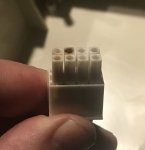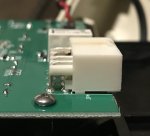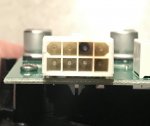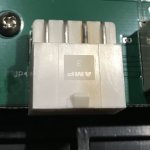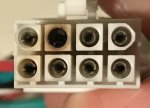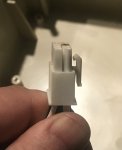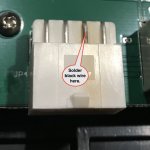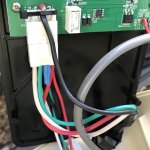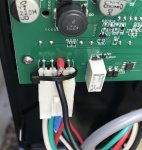My IC40 start-up was in fall 2017, and intellipH was added summer 2020.
Both stopped working recently. IntellipH control box has power, but red error light is on, and the IntellipH message panel says the the salt cell is not on. Manual acid injection is not allowed. All IC40 lights are off. I see no Ca build up on the plates (I acid-cleaned in the summer). There doesn't seem to be a fuse in my IntelliChlor power center, and I wonder is that is unneeded for the power center sold for installation with the Easytouch, which has the circuit breakers.
In 2019 (no IntellipH), the IntelliChlor stopped making Cl, and I had a warranty call which diagnosed a flow sensor issue, so that was replaced.
In past years my system has run under 5K active hours (hr/day*days*percent on), but I'm now beyond the 3 year new pool warranty. Since my pool is small, I run the Intellichlor in the 10-40% range, highest at peak of summer. Some older threads indicate that all lights out is unlikely to be a flow sensor (I can't recall and my notes don't show what the lights were doing in 2019).
I'd welcome any assessments and suggestions for troubleshooting. Does the fact that the IntellipH is on mean that the intellichlor is seeing normal power, and the problem is definitely inside the Intellichlor? Worth replacing the flow sensor, just to see?
Ed
Both stopped working recently. IntellipH control box has power, but red error light is on, and the IntellipH message panel says the the salt cell is not on. Manual acid injection is not allowed. All IC40 lights are off. I see no Ca build up on the plates (I acid-cleaned in the summer). There doesn't seem to be a fuse in my IntelliChlor power center, and I wonder is that is unneeded for the power center sold for installation with the Easytouch, which has the circuit breakers.
In 2019 (no IntellipH), the IntelliChlor stopped making Cl, and I had a warranty call which diagnosed a flow sensor issue, so that was replaced.
In past years my system has run under 5K active hours (hr/day*days*percent on), but I'm now beyond the 3 year new pool warranty. Since my pool is small, I run the Intellichlor in the 10-40% range, highest at peak of summer. Some older threads indicate that all lights out is unlikely to be a flow sensor (I can't recall and my notes don't show what the lights were doing in 2019).
I'd welcome any assessments and suggestions for troubleshooting. Does the fact that the IntellipH is on mean that the intellichlor is seeing normal power, and the problem is definitely inside the Intellichlor? Worth replacing the flow sensor, just to see?
Ed
Last edited:


